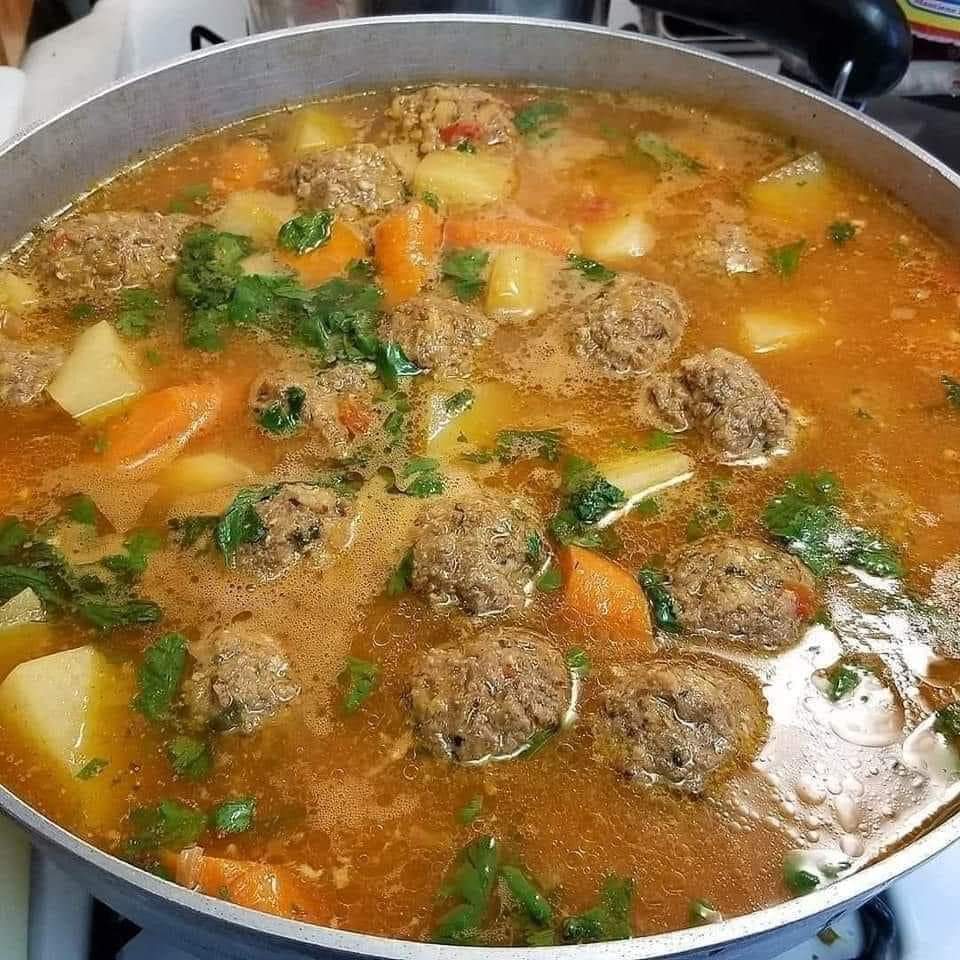Albóndigas are a traditional Spanish and Latin American dish consisting of meatballs typically made from ground beef or pork, mixed with various ingredients such as herbs, spices, bread crumbs, and eggs. They are often served in a tomato-based sauce or broth. Albóndigas can provide several health and nutritional benefits:
1. Protein: The main ingredient in albondigas is typically ground meat, which is a good source of protein. Protein is essential for building and repairing tissues, supporting immune function, and maintaining healthy skin, hair, and nails.
2. Vitamins and Minerals: Albóndigas often contain ingredients like onions, garlic, and herbs, which provide various vitamins and minerals. Onions, for example, are rich in vitamin C and certain antioxidants, while garlic offers compounds with potential immune-boosting properties.
3. Fiber: Depending on the recipe, albondigas may include ingredients like vegetables or whole grain bread crumbs, which can add fiber to the dish. Fiber promotes healthy digestion, helps regulate blood sugar levels, and supports heart health.
4. Nutritional Variety: By including a variety of ingredients like vegetables, herbs, and spices, albondigas can provide a range of nutrients. Different vegetables can contribute vitamins, minerals, and antioxidants, while herbs and spices add flavor and potential health benefits due to their unique phytochemical compounds.
5. Versatility: Albondigas can be made with different types of meat or even vegetarian alternatives, allowing for customization based on dietary preferences and restrictions. This versatility allows individuals to adapt the dish to their specific nutritional needs.
However, it’s important to note that the overall nutritional profile of albondigas can vary depending on the specific recipe and cooking method. For example, if the meatballs are deep-fried or served with a heavy, high-fat sauce, the dish may be higher in calories and unhealthy fats. To make albondigas a healthier option, consider baking or pan-searing the meatballs and using a lighter sauce or broth.
As with any dish, portion size and overall dietary context are also important factors to consider for optimal nutrition.
Albondigas

Ingredients:
1lb lean beef
2 potatoes
1 can tomato sauce
2 full teaspoon of Rice long grain
2 carrots
Cilantro 1/2 cup
Half an onion chopped
1 jalapeño
1 egg
2 Tsp flour
Salt, pepper, comino, pepper, garlic powder, onion powder.
In a large bowl add the meat, salt, pepper, garlic powder, pepper, comino, 1 egg and 1 tsp of flour, the rice and combine. Make into meatballs. Set aside.
I don’t measure so start w a 1/2 tsp of seasoning and go from there.
Directions:
Chop the potatoes and onion. Sauté together in oil for abt 3 min stirring frequently, add 1 tsp flour to that and sauté for about another min.
I don’t measure so I add water abt 2” above the potatoes. Add 1/2 can of Tomato sauce ( to start ) it’s up to you how you like it.
Add cilantro, 1 tsp of seasonings noted above, and adjust to your liking ,add carrots( sliced), jalapeño (sliced)
Add the meatballs gently and cover, simmer for abt 30 min or until meatballs are done and potatoes are tender. May be less depending how big your meatballs are.
¡Claro! Aquí tienes algunos consejos para hacer unas deliciosas albóndigas:

1. Mezcla de carne: Utiliza una combinación de carne de res y cerdo para obtener un sabor más rico. También puedes agregar carne de pollo o pavo si lo prefieres.
2. Pan rallado y huevo: Agrega pan rallado y huevo a la mezcla de carne para ayudar a unir los ingredientes y hacer las albóndigas más suaves. Asegúrate de mezclar bien para que todos los ingredientes se distribuyan de manera uniforme.
3. Aromatizantes: Agrega condimentos y especias a tu gusto para darle sabor a las albóndigas. Algunas opciones populares son el ajo, la cebolla, el perejil, el comino, el orégano, la nuez moscada y la pimienta.
4. Prueba antes de cocinar: Antes de formar todas las albóndigas, es una buena idea cocinar una pequeña porción de la mezcla y probarla. De esta manera, puedes ajustar los condimentos según tu preferencia antes de hacer el resto.
5. Tamaño y forma: Decide el tamaño y la forma de las albóndigas según tus preferencias. Puedes hacerlas pequeñas para servirlas como aperitivo o más grandes para un plato principal. Asegúrate de darles forma de manera uniforme para que se cocinen de manera pareja.
6. Sellar las albóndigas: Antes de cocinarlas, es recomendable sellar las albóndigas en una sartén con un poco de aceite caliente. Esto les dará un exterior dorado y crujiente, además de ayudar a mantener su forma mientras se cocinan.
7. Métodos de cocción: Puedes cocinar las albóndigas de varias formas, como al horno, a la parrilla, en una sartén o hervidas en una salsa. Escoge el método de cocción que prefieras y ajusta los tiempos de cocción en consecuencia.
8. Salsa: Si decides servir las albóndigas con salsa, elige una que complemente su sabor. Puedes optar por una salsa de tomate, una salsa de champiñones, una salsa de vino o cualquier otra que te guste.
9. Acompañamientos: Considera los acompañamientos que servirás con las albóndigas. Pueden ir muy bien con arroz, puré de papas, pasta, ensalada o verduras asadas. Elige lo que más te apetezca.
¡Espero que estos consejos te ayuden a preparar unas deliciosas albóndigas! Disfruta de tu comida.